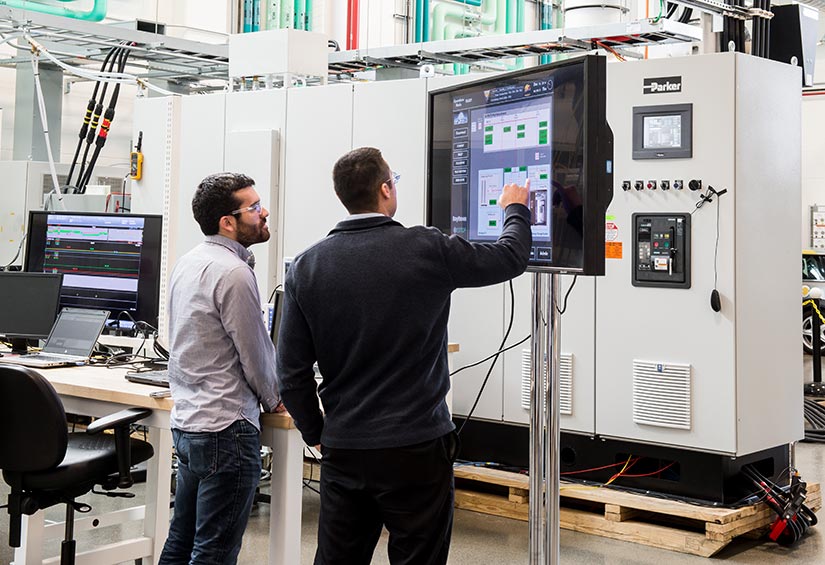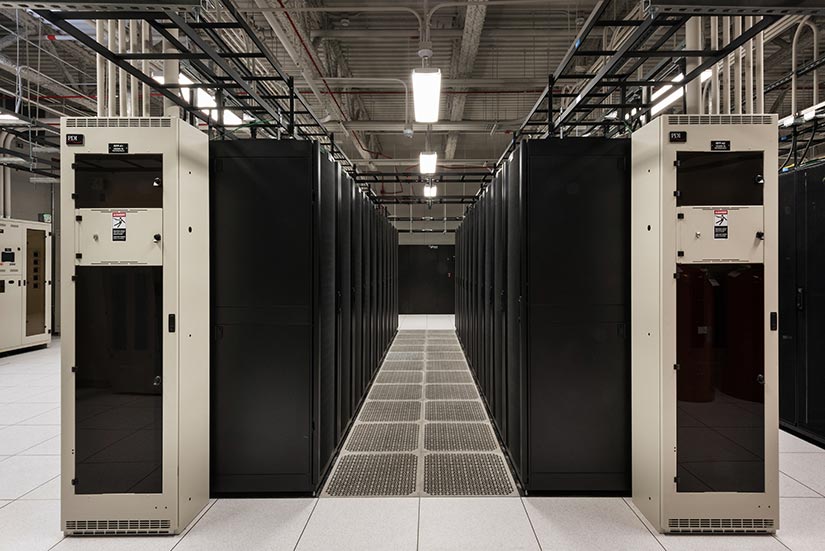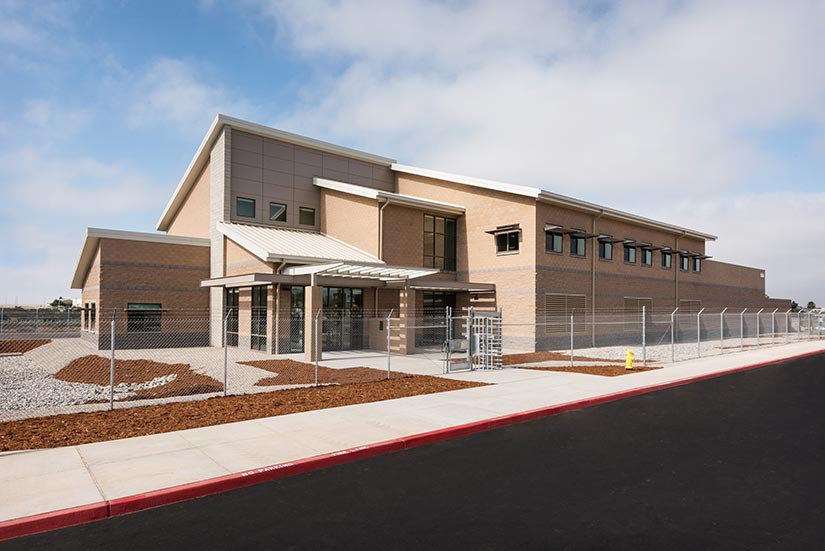National lab helps Marine Corps Air Station build efficient, resilient, cost-effective data center

NREL and Raytheon performed system-level testing for MCAS Miramar on a simulated microgrid at NREL’s Energy Systems Integration Facility in 2014. Photo by Dennis Schroeder, NREL

The National Renewable Energy Laboratory (NREL), a national lab of the U.S. Department of Defense (DoD), recently announced the successful completion of a data center project targeting efficiency and design in partnership with Marine Corps Air Station (MCAS) Miramar.
Even before the latest data center project, MCAS Miramar was an award-winning energy and water security leader within the DoD. NREL has been a partner for over a decade in enhancing its resiliency, energy efficiency, and integration of renewable energy, having helped develop and implement MCAS Miramar’s installation-wide microgrid including solar arrays, future battery storage system, and on-site landfill-gas power plant incorporating fossil fuel generators. If needed, MCAS Miramar can support over 100 mission-critical facilities while decoupled from the grid for weeks at a time and has the ability to seamlessly test the system in various training scenarios, points out NREL.
After a series of successful energy projects, MCAS Miramar decided to target data center energy efficiency and design — a big opportunity for federal facilities as efficiently cooling the large numbers of computer systems can offer tremendous energy and water savings, notes NREL. Additionally, energy efficiency is one of the three pillars of the U.S. Department of the Navy’s Energy Security Framework to support mission readiness.

NREL has experience designing, building, and operating its own high-performance data center, designed to be one of the most energy efficient data centers in the world, with an annual power usage effectiveness (PUE) — the ratio of a facility’s total power use to the power used by its computing equipment — of less than 1.04. A “perfect” data center would have a PUE of 1.0. Across data centers overall, average PUE hovers around 1.8, and data centers focusing on efficiency typically seek to achieve PUE values of 1.2 or lower, explains NREL, so the national lab was well poised to assist MCAS Miramar in its new endeavor.
NREL assured MCAS Miramar’s design team they could be more ambitious with energy efficiency targets using data center best practices. These included arranging servers and racks in a hot aisle/cold aisle layout, where server racks line up in alternating rows so that cold air intakes and hot air exhausts face opposite directions. Cooled air is targeted at the front of the rack — where the intakes are located — and warmed air is directed out the back of the equipment into the hot aisle.
Other examples of best practices included using ambient air to maximize free cooling and designing an efficient cooling system. Another notable innovative design choice was to use recycled water for the water-cooled system, as potable water is a critical resource in the San Diego area.

The energy cost savings from this more ambitious efficiency goal could be used by the Department of the Navy and MCAS Miramar to fund other energy resilience efforts in alignment with federal legislation such as 10 U.S. Code § 2912-Availability and use of energy cost savings.
NREL electrical engineers made another suggestion that changed the shape of the project — leverage the building’s 2-megawatt (MW) backup diesel generator, previously planned to serve just the data center, as an asset for the entire installation by integrating it with the installation’s microgrid. This way, the generator could be better utilized during contingency operations while boosting resiliency and supporting other facilities at MCAS Miramar.
The national lab also suggested the data center project could be a good opportunity to use performance-based design-build, a strategy to integrate energy performance requirements early on in building design. The process is founded in the idea that deep and cost-effective energy savings are possible — even with typical construction budgets — when these goals are placed front and center in the concept design, requests for proposals, budgets and planning.
NREL has used an integrated design-build approach for all of its own new buildings since 2010, when it pioneered the practice in designing the federally owned Research Support Facility on its Golden, Colorado, campus.
MCAS Miramar embraced the idea, crafting a performance-based design-build contract that incorporated requirements for a measured data center PUE of 1.2 and for the building’s backup diesel generator to also be able to supply power to the base’s microgrid during outages in addition to providing backup power to the data center.
The data center was commissioned and turned over to MCAS Miramar in the summer of 2020. Advanced metering infrastructure system testing indicates the target PUE of 1.2 was achieved.
The microgrid-connected data center generator is also providing an additional 1.5 MW of power to the entire installation when isolated from the utility.
Learn more about the NREL / MCAS Miramar project and partnering with NREL on the national lab’s website.
